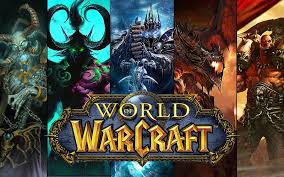World of Warcraft (WoW) is more than just a game; it’s a sprawling universe that has captured the hearts and minds of millions across the globe since its launch in 2004. Developed by Blizzard Entertainment, WoW is a massively multiplayer online role-playing game (MMORPG) that immerses players into a rich fantasy world filled with lore, quests, and adventures. With its complex gameplay mechanics and deep storytelling, World of Warcraft has redefined the way we view interactive entertainment. In this blog post, we will explore various facets of WoW, including its history, gameplay dynamics, community impact, and future prospects https://ok9st4b.com/.
The History of World of Warcraft
Understanding the legacy of World of Warcraft begins with a look back at its origins.
The franchise started with the release of the first Warcraft game in 1994, which laid the groundwork for the series’ intricate lore and characters. However, it was the transition to an MMORPG format that truly revolutionized the gaming landscape.
The Birth of Warcraft
The initial Warcraft games were real-time strategy titles that focused on tactical combat and resource management. They provided a glimpse into the world of Azeroth, home to various races such as Humans, Orcs, and Night Elves.
These early titles introduced key factions, characters, and conflicts that would shape the narrative arc of World of Warcraft. For instance, the battle between the Alliance and the Horde became central to the story, laying the foundation for the factional dynamics that continue to thrive in WoW today.
Blizzard’s ability to craft engaging stories coupled with immersive gameplay drew a loyal fanbase long before WoW made its debut. Players formed attachments to their favorite heroes and villains, setting the stage for a much broader adventure when the MMORPG was finally released.
The Launch and Early Years
World of Warcraft launched on November 23, 2004, and quickly became a phenomenon. Within weeks, millions of players around the world flocked to Azeroth, eager to embark on epic quests and forge alliances.
The game offered something unique: a living, breathing world that encouraged exploration and social interaction. This blend of addictive gameplay and community-driven experiences allowed WoW to stand out in a crowded market.
In its early years, World of Warcraft received several expansion packs, including The Burning Crusade, which introduced new races and drastically expanded the game’s world and lore. Each subsequent release built upon the existing content while introducing fresh challenges and stories, keeping players engaged for years.
Evolution through Expansions
As the years progressed, World of Warcraft continued to expand its universe through numerous expansions and updates. Significant expansions like Wrath of the Lich King, Cataclysm, Mists of Pandaria, and Legion not only enriched the existing lore but also modernized gameplay elements.
Each expansion brought new zones, dungeons, raids, and character classes, allowing players to experience varied gameplay styles. The introduction of the Pandaren race in Mists of Pandaria and the Demon Hunter class in Legion are prime examples of how Blizzard continually innovates to keep the game fresh.
However, with these expansions came challenges. The evolving nature of WoW sparked debates within the player community about class balance, game mechanics, and the impact of new content on the overall game experience. These discussions are a testament to the passionate player base that has invested countless hours into the game.

Thanks for the sensible critique. Me and my neighbor were just preparing to do some research on this. We got a grab a book from our local library but I think I learned more from this post. I am very glad to see such great info being shared freely out there.